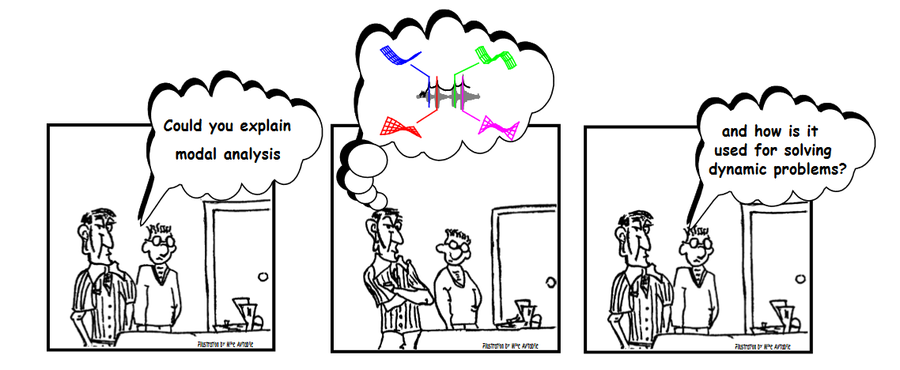Modal Theorical FAQ
When impact testing, can the use of the exponential window cause any problems?
What's the difference between a complex mode and a real normal mode?
Is it really necessary to reject a double impact?
Do I need to have an accelerometer mounted in the X, Y and Z directions to do a modal test?
Could you explain the difference between time domain, frequency domain and modal space?
Could you explain the difference between time domain, frequency domain and modal space?
I still don't understand curvefitting ...
Someone told me SDM will never work
Is there any real advantage to MIMO testing? Why not just use SISO and then move the shaker?
I ran a modal test on a portion of a structure of concern and many modes look the same!
Is there a difference between a roving hammer and roving accelerometer test?
Are you sure you can get mode shapes from one row or column of the H matrix?
I hear about SVD all the time Could you explain it simply to me?
What's the difference between local and global curvefitting ?
Which shaker excitation is best? Is there any difference?
I'am still overwhelmed by all this modal stuffLaplace, Fourier, FRFs, and all that!
I showed some mode shapes to someone. They asked me if the structural design was ok. What should I tell them ?
